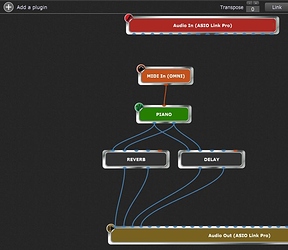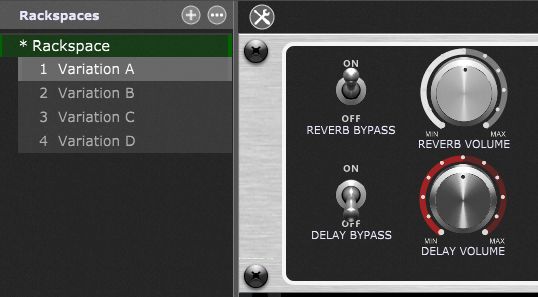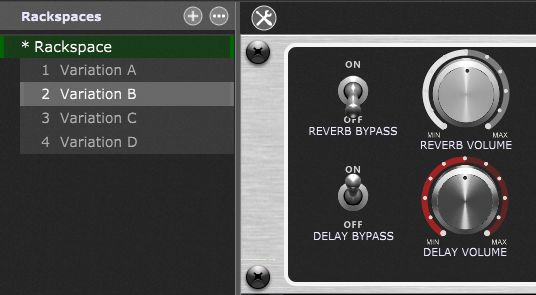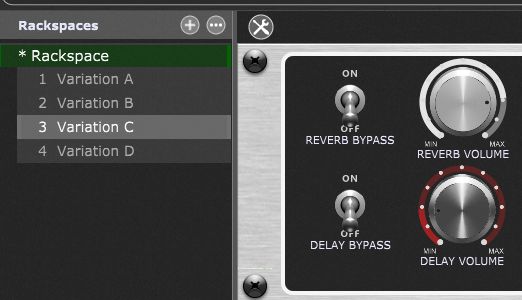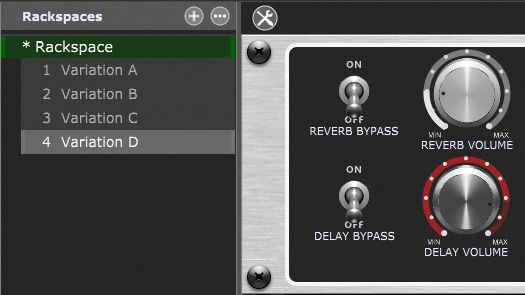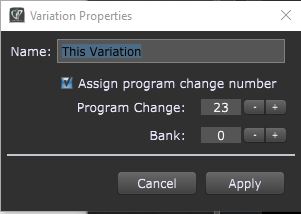just to made this clear:
i did not say its cumbersome ( since you sayed: “also” )
but i agree that i also see some “potential” to further enhance the functionality of GP3,
anyway when its about studio-use cases.
I had my own thoughts vs. creating a third type of form of how GP could deal with rackspaces,
a type of “Rack-presets”,
A real given point, where a “inbetween” between “Rackspace-Variations” and just “doubled-Rackspaces” with further changed parameters would come in more than just handy, is:
the widgets…and further development of the widgets over time! (within given Rackspaces)
if we could have a third form of dealing with Rackspaces, that:
_would just deal with one “Patch” ( you call it a Rackspace in GP)
( while “your” Rackspaces could in fact contain different (what i call) “patches” ( the back view), one rackspace vs. the other )
So, any further level of a “preset” you would create ( a new, third form of dealing with “Rackspaces”, /…in that sense, beeing a second form of “Variation” ) would share the same "front Rackspace with all its widgets and range settings,
so if you would change or readjust one widget /or its inner “range” settings, would it be applyed to any other “Rack-Preset” within that “Rackspace”.
To have THIS, would be über-awesome, and would help in my case to avoid alots of workflow problems and chaos that is created by me, within all the files that i create ( have to create).
While this type of “Rack-preset” would allow for changes of parameters that are NOT covered by widgets within the backview of a rack, and also would allow for changing presets within a plugin ( i see, there are some open questions here vs. preset changes on Plugins)
I mean: i have all the time to double my Rackspaces, ( and NOT creating “Variations” since it has its limitations), but i allways would further develope my widgets from there,
so i end up with lots of gig files, within those often with same rackspaces ( just the parameters of the plugins changed) , but then, …would some of these Racks evolve better than others when it comes to further development of the widgets and their settings.
This creates for me alots of work , but also confusion, and is somehow a blocking factor for developing my “rackspaces” further and further.
… i pesonally can´t boil down my workflow into something more coherent and efficient.
Whatever i do, i end up with chaos, …too many files, and no good overview at the end.
What is missed “for me” is indeed the inbetween between a “Variation” (sharing the same Front rackspace / and finally also the back rackspace,
and the "new/copy Rackspace " workflow, which allows for the parameter changes, but would no longer share the front racksapce with its widgets and (inner) settings.
there´s the Gap !
( its NOT complaining what i´m doing !
i´m every day where i can use GigPerformer super super thankful that it exists !
…i´m just very vocal on: where i see potential for further development ( beeing fully aware that you for shure have your own basket full with things that you´d like to add, or rework, or refine… )
)
